Why all SaaS landing page projects should start from content
When I ask SaaS marketers how they start new landing page projects, 50% say they start with design, and the other half start with content.
I’ve started with design in the past as well.
When I was working on client websites, I often had to figure out the structure and content myself.
Without knowing too much about the client’s industry and customers before the project, I guided designers and developers to build a page for clients to preview on time.
The pages were far from optimal. We called them design mockups to manage client’s expectations.
In reality, creating even a mockup requires you to answer multiple critical questions:
- Who’s this page for?
- Where’s the traffic coming from, and are visitors ready to buy?
- What’s the optimal structure for the page?
- What does the page say?
If you really spend time on those questions, you quickly realise they are not trivial. Not for the founder and marketer in SaaS, and definitely not for a designers and developers who started working on the ticket in between other tasks.
Without a proper plan covering those questions, starting from design easily leads to three outcomes:
- Mediocre pages because you haven’t spent enough time researching the audience and thinking what page structure and content would serve them best.
- Back-and-forth between team members when the content doesn’t fit the original design mockup.
- A lot of tedious CMS editing work when fitting the content to the design. It’s too much work to design from scratch, and the deadline and budget might be tight.
If you’ve been working for a growing SaaS or an agency helping SaaS companies, you must have seen this multiple times. The only question is which role you’ve played.
In this blog post, I’ll share how I plan landing pages content-first with LandingRabbit. You don’t need LandingRabbit to follow the same path, though. You can use any content editor and your favourite wireframing tools (but LandingRabbit saves you and your team countless hours).
How to create SaaS landing pages starting from content, not design
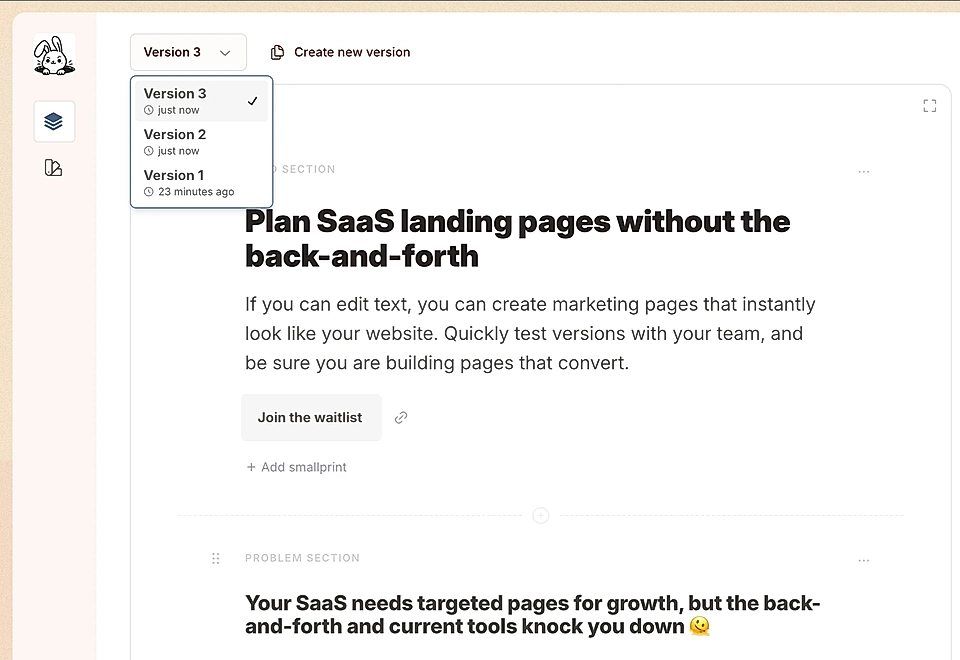
Having someone to build the page for you isn’t necessarily a bottleneck today. The real bottleneck is the planning and collaboration phase between everyone involved in the process.
My content-first landing page creation process includes three steps:
- Create a page brief
- Plan the page structure
- Write content
Let’s look at each step in detail.
1. Create a page brief
The best landing pages talk like a customer would explain your SaaS service to another.
Writing a page like that is easier said than done. You need to imagine yourself in the customer’s shoes.
While you might get your homepage right, the best SaaS websites have a lot of pages to convince buyer teams and people at different stages of the buyer journey.
For example, you might create pages like “[our solution] for [industry]”, and imagining yourself in the customer’s shoes can be quite tricky.
Therefore, a page brief covering the key ingredients is crucial.
Here’s what a page brief for my landing pages looks like:
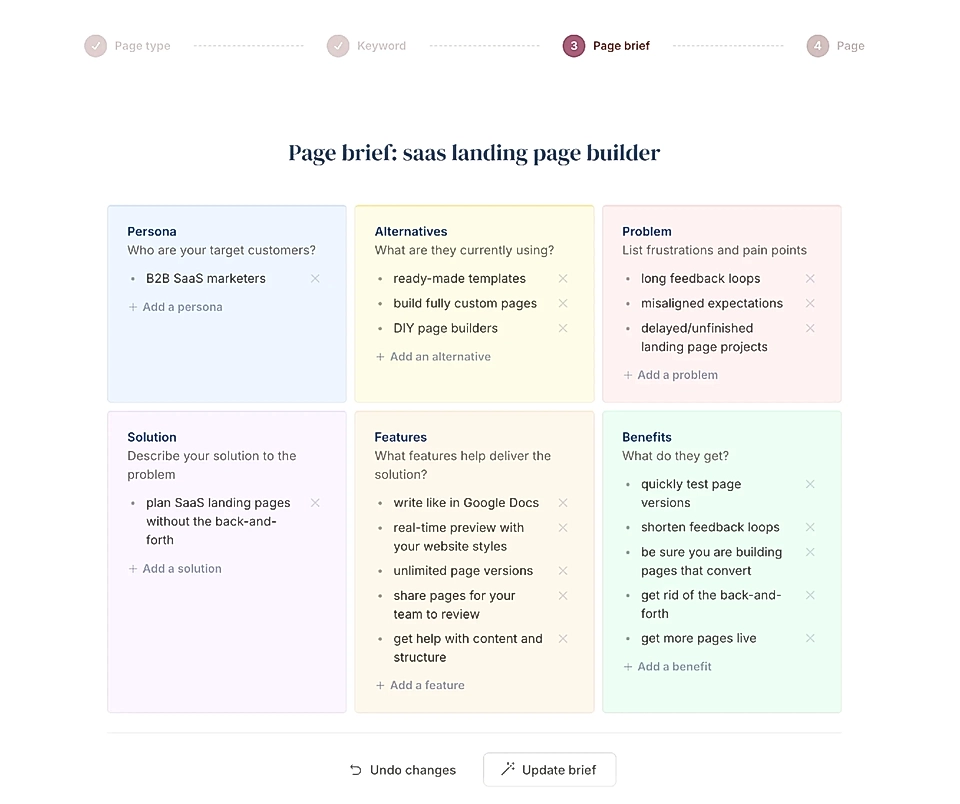
I use LandingRabbit to create the brief because the AI working in the background helps me get started. But you can create something similar in Miro or another visual note-taking tool to create your own canvas.
My brief includes the key ingredients of any marketing campaign, and having them all in front of me helps me make sure that everything is aligned.
If I edit any part, I’ll adjust other parts as well. For example, changing the persona means that pretty much all aspects of the brief need revision.
If you are unsure about completing this task, take a look at my tips on writing a SaaS value proposition.
2. Plan the page structure
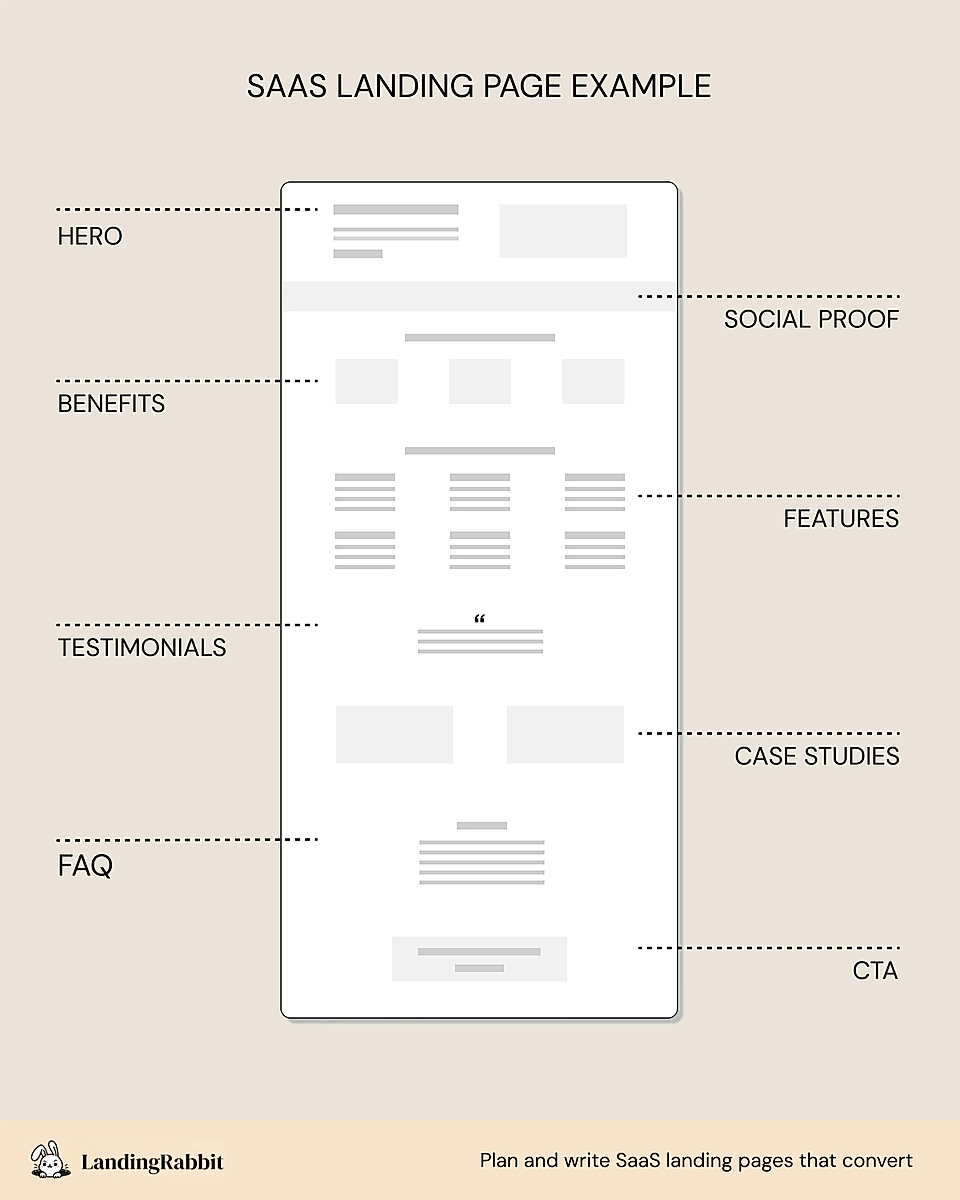
The next step is planning the page structure.
Templates can help, but there’s a catch: many SaaS teams copy and paste old page templates without thinking about the best possible structure that much.
But the best possible page structure considers three things:
- Who’s going to visit the page? Is it the champion user or everyone from the prospect’s team before they make a decision?
- What’s the buying stage? Is the prospect starting their journey or ready to buy?
- What’s the page topic? A page dedicated to a certain industry should be different to a page discussing a specific feature.
With LandingRabbit, I get a proposed page structure based on my page brief, the page topic, and the page type. The AI-assisted draft helps me quite a bit, and I can edit the structure as much as I like.
If you are planning the page structure without LandingRabbit, you might find these resources useful:
3. Write content
The last step is to write the content.
Every page has a hero section, and you should invest time in getting that right. It’s like any other first impression – you only get the opportunity once, and people make their minds quickly.
Therefore, it’s very important to set page visitors’ expectations right and communicate who the service is for, why it matters, and how the value is delivered.
There’s no one formula for the hero section, and you can find some of my favourites in a curated gallery of SaaS landing page examples.
LandingRabbit writes a draft for me, but you can use any text editor to get the job done.
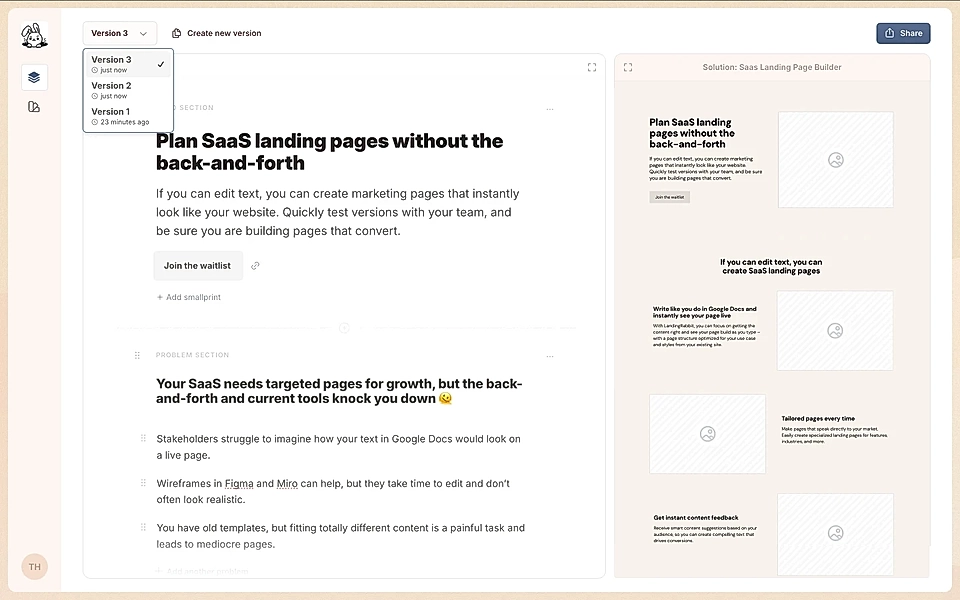
However, one key reason I use LandingRabbit is the instant visualisation of the page using the fonts, styles, and colours of my existing website.
I always create multiple versions of the page. Versions allow me to quickly test different content and page structures and see how my thinking develops from one to another.
If you haven’t been writing much, I recommend you take a look at this SaaS landing page template example.
Once I’m happy with one or a few versions, I share pages for my team to review. With LandingRabbit's Google Docs-like editing tool, change requests are super easy to deliver. Based on the feedback, my team can quickly test new ideas and be confident that the version we choose to implement best serves our audience.
You can publish the landing page with LandingRabbit just like with any other website builder.
- No code tools like Lovable, Bolt, and v0
- Custom websites with HTML and JSON exports
For example, with LandingRabbit’s Webflow plugin, publishing the page is as easy as copy and paste.
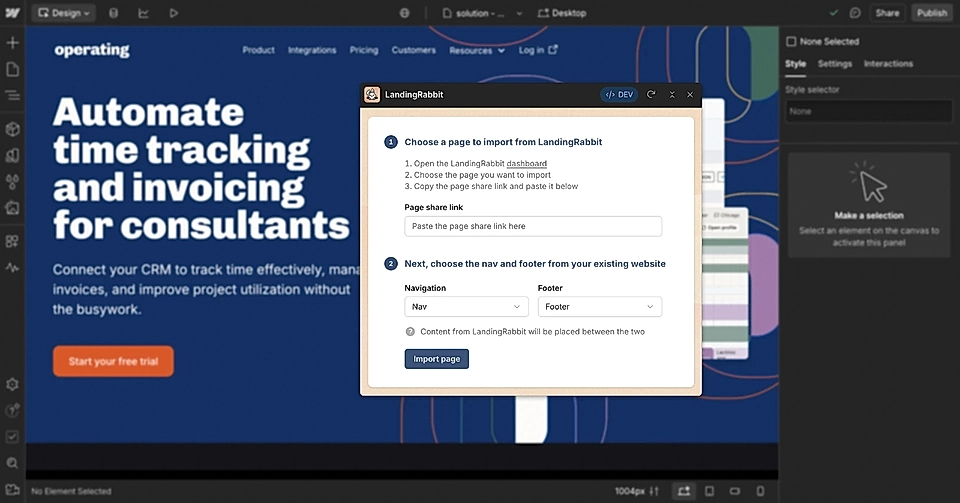
Does your SaaS team struggle with creating landing pages? If you do, you might find LandingRabbit’s landing page builder useful. Based on the page type and topic, LandingRabbit helps you plan and create landing pages that make page visitors say aha!
Sign up for our 14-day free trial and be the first in line to plan and create SaaS landing pages.